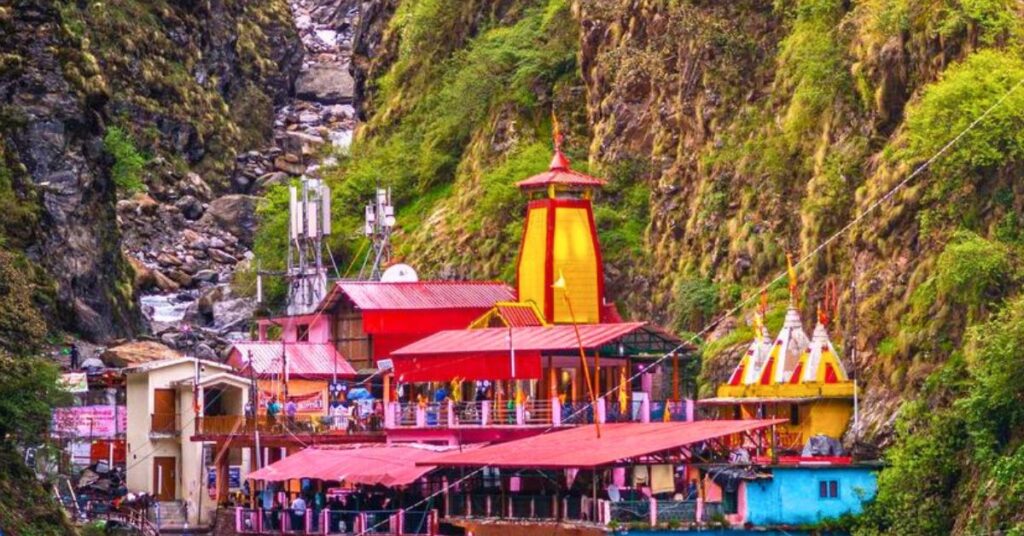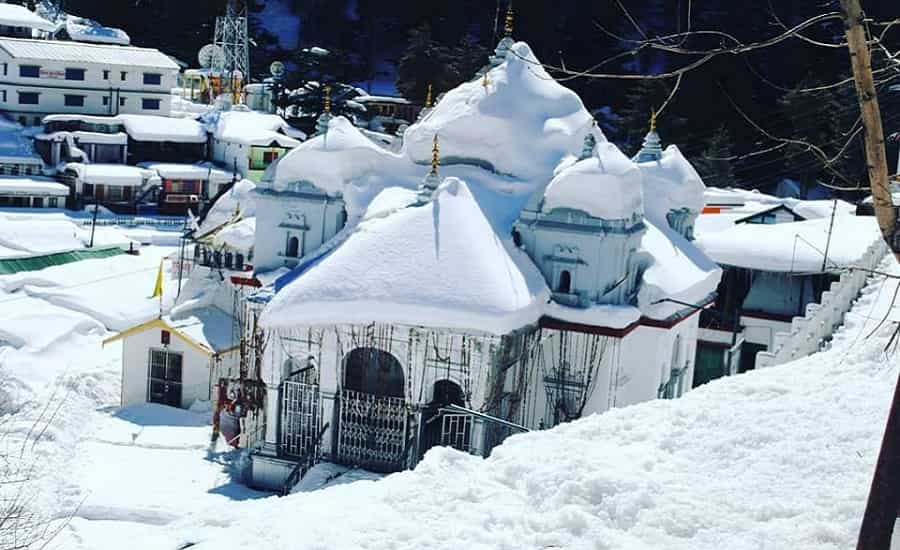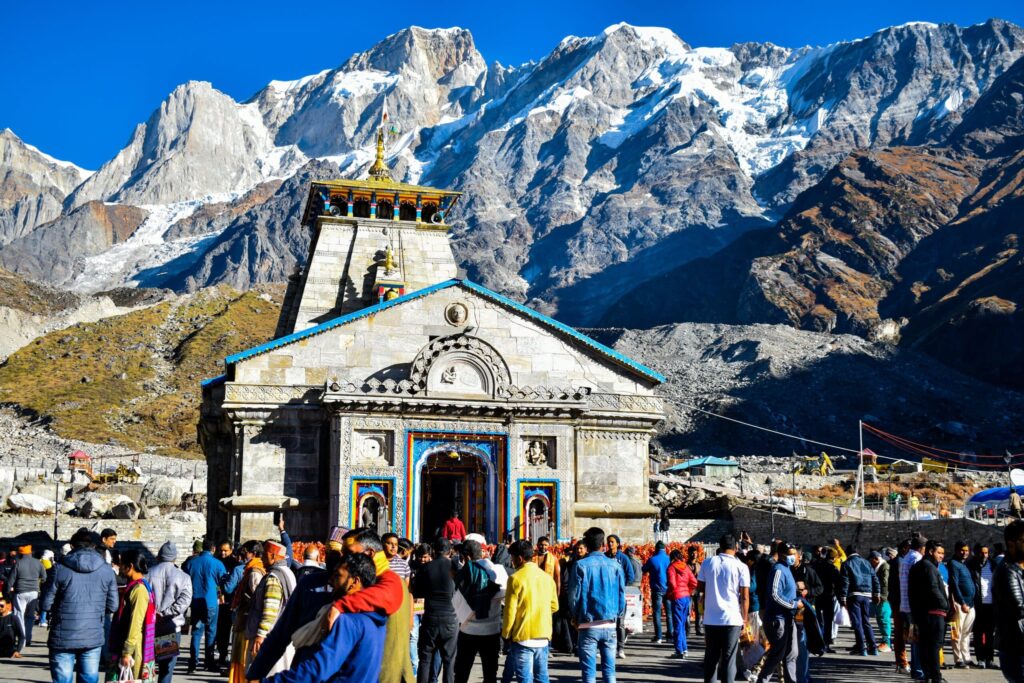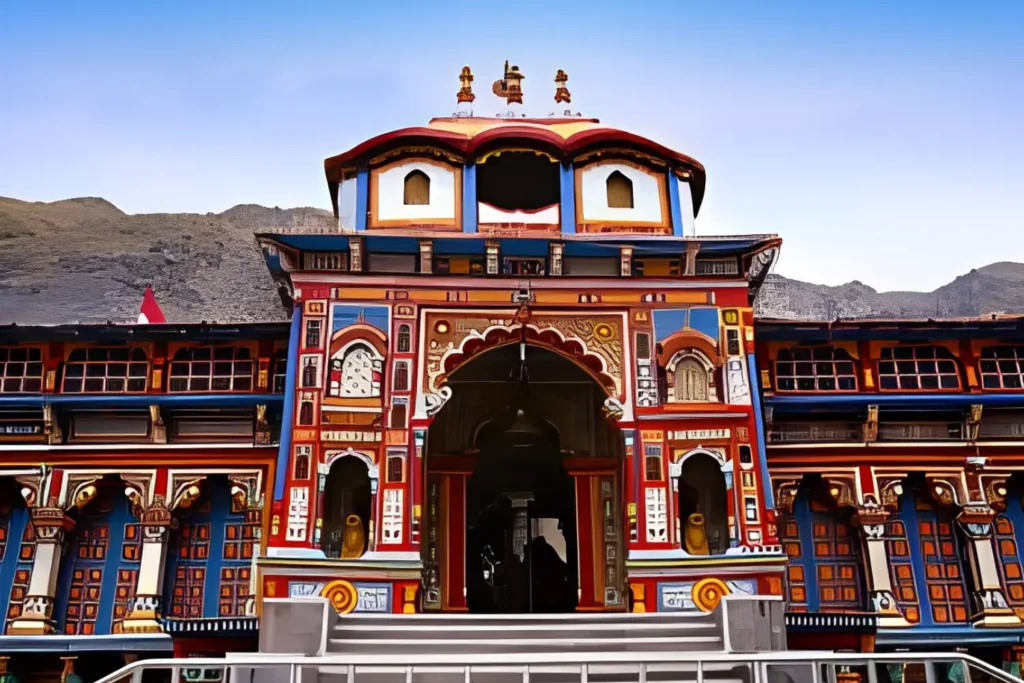Uttarakhand Ke Char Dham – A Spiritual Sojourn
“Pilgrims visit the Char Dham of Uttarakhand God’s Land, often referred to as the Chhota Char Dham, to experience a journey through four sacred pilgrimage sites nestled in the Garhwal Himalayas of Uttarakhand God’s Land, India. These sites—Yamunotri, Gangotri, Kedarnath, and Badrinath—attract millions of devotees each year who seek spiritual upliftment, inner peace, and divine blessings.”
1. Uttarakhand Historical and Spiritual Significance
The term “Char Dham” traditionally refers to the four main pilgrimage sites in India — Badrinath, Dwarka, Puri, and Rameswaram — established by Adi Shankaracharya in the 8th century CE. The Char Dham of Uttarakhand God’s Land stands as a prominent pilgrimage circuit, deeply rooted in spiritual significance. “Adi Shankaracharya envisioned the Char Dham pilgrimage to unify diverse spiritual traditions and promote spiritual awakening among devotees.”Together, these circuits offer a comprehensive spiritual experience, bridging ancient traditions with contemporary accessibility.
“Pilgrims visit each Dham in Uttarakhand God’s Land to honor a specific deity and connect with an element of the natural world.”
- Yamunotri (Uttarakhand) : Dedicated to Goddess Yamuna (river goddess).
- Gangotri (Uttarakhand) : Dedicated to Goddess Ganga (river goddess).
- Kedarnath (Uttarakhand) : Dedicated to Lord Shiva.
- Badrinath (Uttarakhand) : Dedicated to Lord Vishnu.
https://en.wikipedia.org/wiki/Char_Dham

2. Yamunotri Dham (Uttarakhand)
Location:
Yamunotri is located in the western Garhwal Himalayas at an altitude of about 3,293 meters (10,804 feet) in the Uttarkashi district in Uttarakhand God’s Land.
Significance:
“Devotees dedicate the shrine to Goddess Yamuna, who is They believe that bathing in the Yamuna cleanses sins and protects from untimely death.”
Key Attractions:
- Yamunotri Temple: Built in the 19th century by Maharani Gularia of Jaipur, the temple houses a silver idol of Yamuna.
- Surya Kund: A hot water spring used to cook rice and potatoes as offerings (prasad).
- Divya Shila: “Devotees revere Divya Shila, also known as the ‘Slab of Divine Light,’ a sacred stone pillar situated near the Yamunotri Temple in Uttarakhand.”
Trek and Accessibility:
The base town is Janki Chatti, and a 6 km trek leads to the temple. Horses and palanquins are available for those unable to walk.

3. Gangotri Dham (Uttarakhand)
Location:
“Pilgrims visit Gangotri, situated at an altitude of 3,100 meters (10,200 feet) in the Uttarkashi district, Uttarakhand God’s Land, along the banks of the Bhagirathi River.”
Mythology:
King Bhagirath’s intense penance brought the Ganga down from the heavens, and Lord Shiva captured her in his matted hair to prevent devastation on Earth.
Key Attractions:
- Gangotri Temple (Uttarakhand) : Built in white granite by a Gorkha commander in the early 19th century.
- Gomukh Glacier (Uttarakhand) : Located about 18 km upstream, considered the actual source of the Ganges.
- Bhagirath Shila (Uttarakhand) : The rock where Bhagirath meditated to bring down Ganga.
Accessibility:
The temple is reachable by road and is the most accessible among the four dhams.

4. Kedarnath Dham (Uttarakhand)
Location:
Located in Rudraprayag district of Uttarakhand God’s Land at a height of 3,583 meters (11,755 feet), Kedarnath is set against the stunning backdrop of snow-capped peaks.
Significance:
Dedicated to Lord Shiva, Kedarnath is one of the twelve Jyotirlingas and the most remote of the Char Dham sites. It is a symbol of divine strength and spiritual austerity.
Mythology:
According to legend, after the Mahabharata war, the Pandavas sought Lord Shiva to absolve their sins. Shiva avoided them by taking the form of a bull. When caught, he dived into the ground, leaving his hump on the surface — which is now worshipped in the temple of Kedarnath, Uttarakhand God’s Land.
Key Attractions:
- Kedarnath Temple: Built using large stone slabs over a rectangular platform; believed to be over 1,000 years old.
- Adi Shankaracharya Samadhi: Marks the spot where Shankaracharya attained moksha.
- Bhairavnath Temple: Guardian deity of Kedarnath during winter when the main temple is inaccessible.
Trek and Accessibility:
A 16 km trek from Gaurikund leads to Kedarnath Uttarakhand. Helicopter services are also available for pilgrims. The journey is considered one of the most arduous but spiritually fulfilling.

5. Badrinath Dham (Uttarakhand)
Location:
Located in Chamoli district at an altitude of 3,133 meters (10,279 feet) on the banks of the Alaknanda River.
Significance:
Dedicated to Lord Vishnu, Badrinath is the most important dham among the four and is part of both the Chhota Char Dham and the main Char Dham of India. It represents the divine power of preservation and protection.
Mythology:
It is believed that Lord Vishnu meditated here under a Badri tree, and Goddess Lakshmi protected him from the harsh weather by taking the form of a tree. The idol is said to have been discovered by Adi Shankaracharya in the Alaknanda River and placed in the temple.
Key Attractions:
- Badrinath Temple: With its colorful facade and black stone (Shaligram) idol of Vishnu in meditation posture.
- Tapt Kund: Natural hot water spring for ritual bathing.
- Narad Kund: Believed to be where the idol of Badrinath was found.
- Charanpaduka: Rock bearing footprints of Lord Vishnu.
- Mana Village: The last Indian village near the Indo-China border; home to the Vyas Gufa and Ganesh Gufa.
Accessibility:
Easily accessible by road from Rishikesh and Joshimath.
https://manish-bahuguna.dmlearning.in/wp-admin/post.php?post=1632&action=edit
6. The Pilgrimage Season and Climate
The Char Dham yatra usually opens in late April or early May (Akshaya Tritiya) and closes around October or November (after Diwali), depending on weather conditions. Due to heavy snowfall, the temples remain closed in winter, and the idols are moved to their winter abodes.
Pilgrims must prepare for high altitudes, unpredictable weather, and physical exertion. Despite these challenges, the spiritual rewards are immense, drawing not only Hindus but also nature lovers and spiritual seekers from around the world.
7. Cultural and Environmental Impact
The pilgrimage has played a key role in sustaining local economies and preserving Himalayan traditions. However, increased footfall and climate change have posed threats to the fragile ecosystem. Initiatives like eco-tourism, waste management, and regulated pilgrim movement are being implemented to mitigate environmental damage.
Moreover, the Kedarnath flood in 2013 was a stark reminder of nature’s unpredictability. In its aftermath, infrastructure has been rebuilt with better safety and sustainability measures.
8. Modern Developments and Government Initiatives
The Government of Uttarakhand and India have prioritized the modernization and safety of the Char Dham yatra. Some key initiatives include:
- Char Dham Highway Project: Improving road connectivity to all four dhams.
- Heli-services and ropeways: Reducing the difficulty of access, especially to Kedarnath.
- Online registration and health checks: Ensuring safety and crowd control.
- Digital guides and signage: Helping tourists navigate better.
The Char Dham Railway Project is also in the works, aiming to connect the pilgrimage sites via rail in the coming years, significantly reducing travel time and increasing safety.
9. Conclusion
The Char Dham of Uttarakhand represents the spiritual soul of India. v”With its deep mythological roots, majestic Himalayan settings, and timeless temples, it is more than a pilgrimage — it is a transformational journey. Every year, thousands brave the mountains not just for divine blessings but also to discover a higher sense of purpose and peace. The journey from Yamunotri to Badrinath is symbolic of the soul’s journey from birth to liberation — through purification, devotion, penance, and finally, divine union.”vThe Char Dham continues to inspire faith, endurance, and harmony — a legacy that transcends religion and geography.
